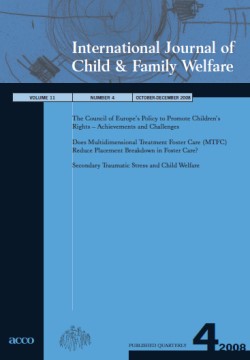Does Multidimensional Treatment Foster Care (MTFC) Reduce Placement Breakdown in Foster Care?
Keywords:
breakdown, antisocial youths, foster home care, Multidimensional Treatment Foster CareAbstract
This study describes and compares placement breakdown rates between three samples of antisocial youth in a child welfare system: a Swedish and a US MTFC program (Multidimensional Treatment Foster Care), and a Swedish national cohort study focusing on adolescent breakdown in traditional out-of-home care. The Swedish national cohort study had more than a three-fold increase in risk of breakdowns compared to the Swedish MTFC program. Although not all the differences were statistically significant, the trend in the material was clear. Regardless of type of care, gender, and time of breakdown, MTFC youths in Sweden with their combination of high internalizing and externalizing symptoms showed lower breakdown rates compared to the other two studies. The author concludes that multi-contextual treatment programs such as MTFC help youths complete their treatment better than traditional out-of-home care. Note: This article has been published in International Journal of Child & Family Welfare, 11, 2-18, but is republished here as there were some errata in the previous version.

